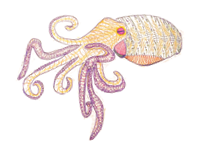-
 EducationHello again my faithful viewers, and thanks for tuning in for another exciting octopus themed blog post. As always I am your host Ilya Chugunov, but today I’ve come with sad news; all good things must come to an end, and this marks the end of my summer research here with Backyard Brains. Now’s a […]
EducationHello again my faithful viewers, and thanks for tuning in for another exciting octopus themed blog post. As always I am your host Ilya Chugunov, but today I’ve come with sad news; all good things must come to an end, and this marks the end of my summer research here with Backyard Brains. Now’s a […] -
 EducationOh hey there! Long time no see, why don’t you have a seat and hear what I’ve been up to since my last blog update. If you were at the Ann Arbor 4th of July parade you might have seen me dressed up as a beautiful purple octopus (or maybe it was a squid? The […]
EducationOh hey there! Long time no see, why don’t you have a seat and hear what I’ve been up to since my last blog update. If you were at the Ann Arbor 4th of July parade you might have seen me dressed up as a beautiful purple octopus (or maybe it was a squid? The […]